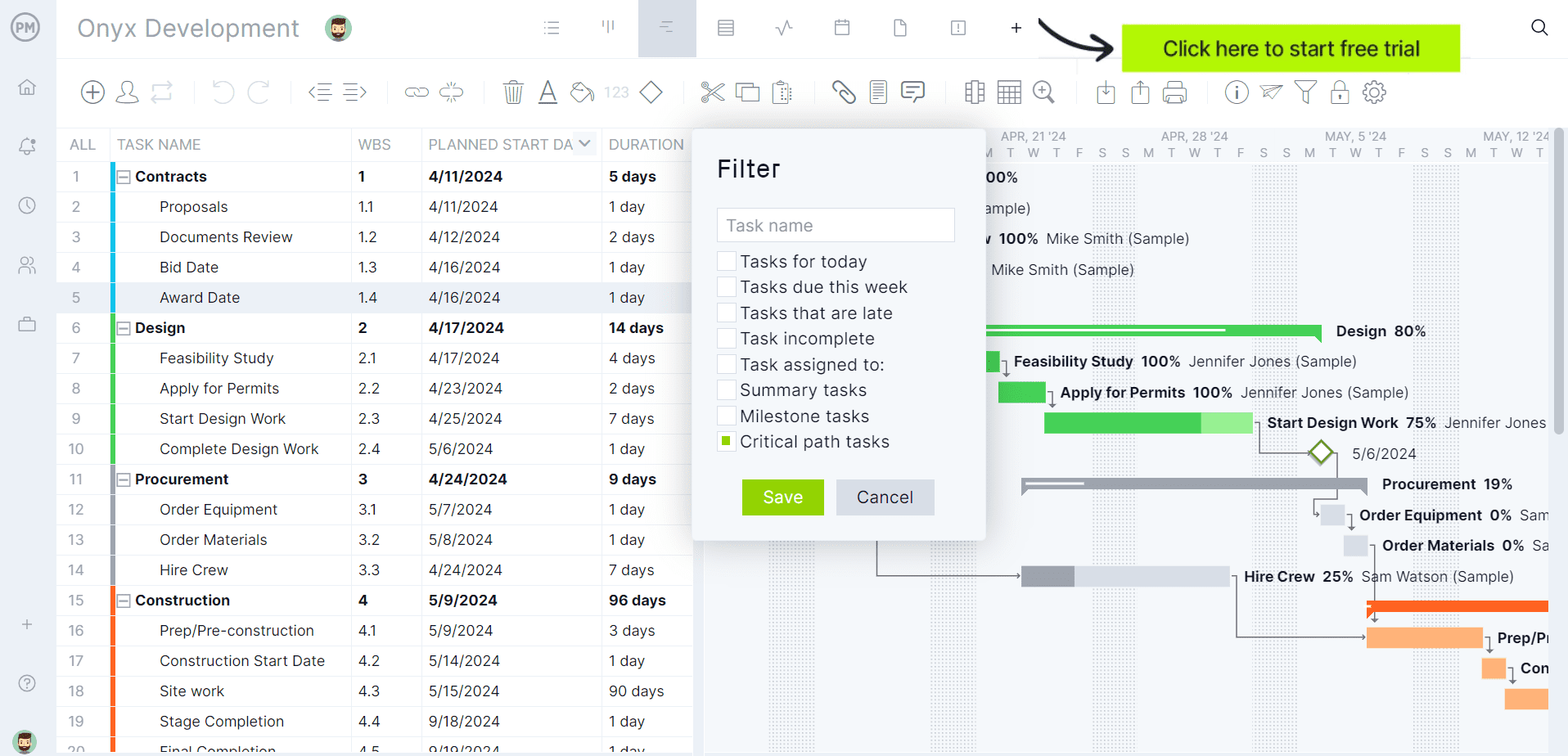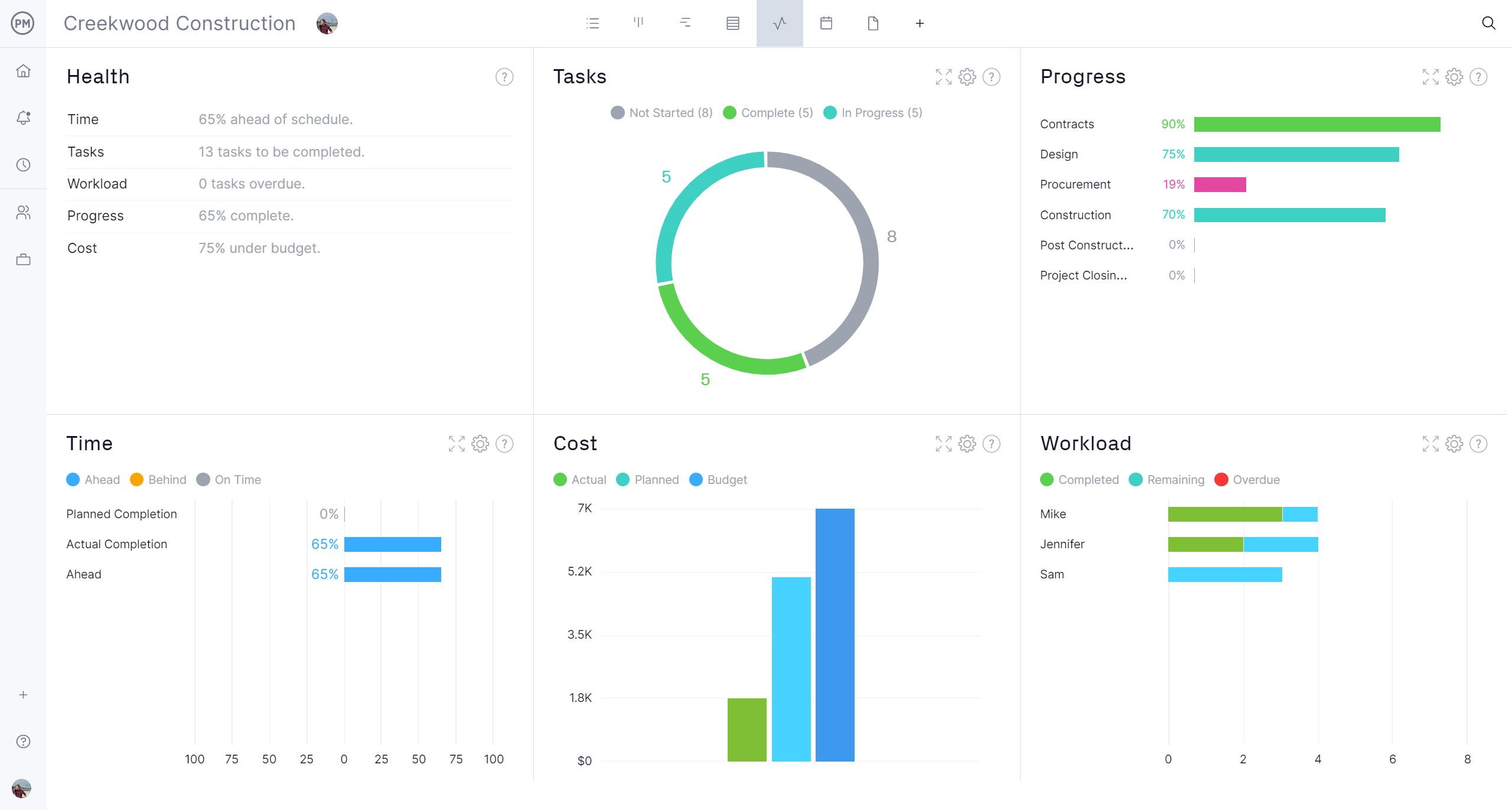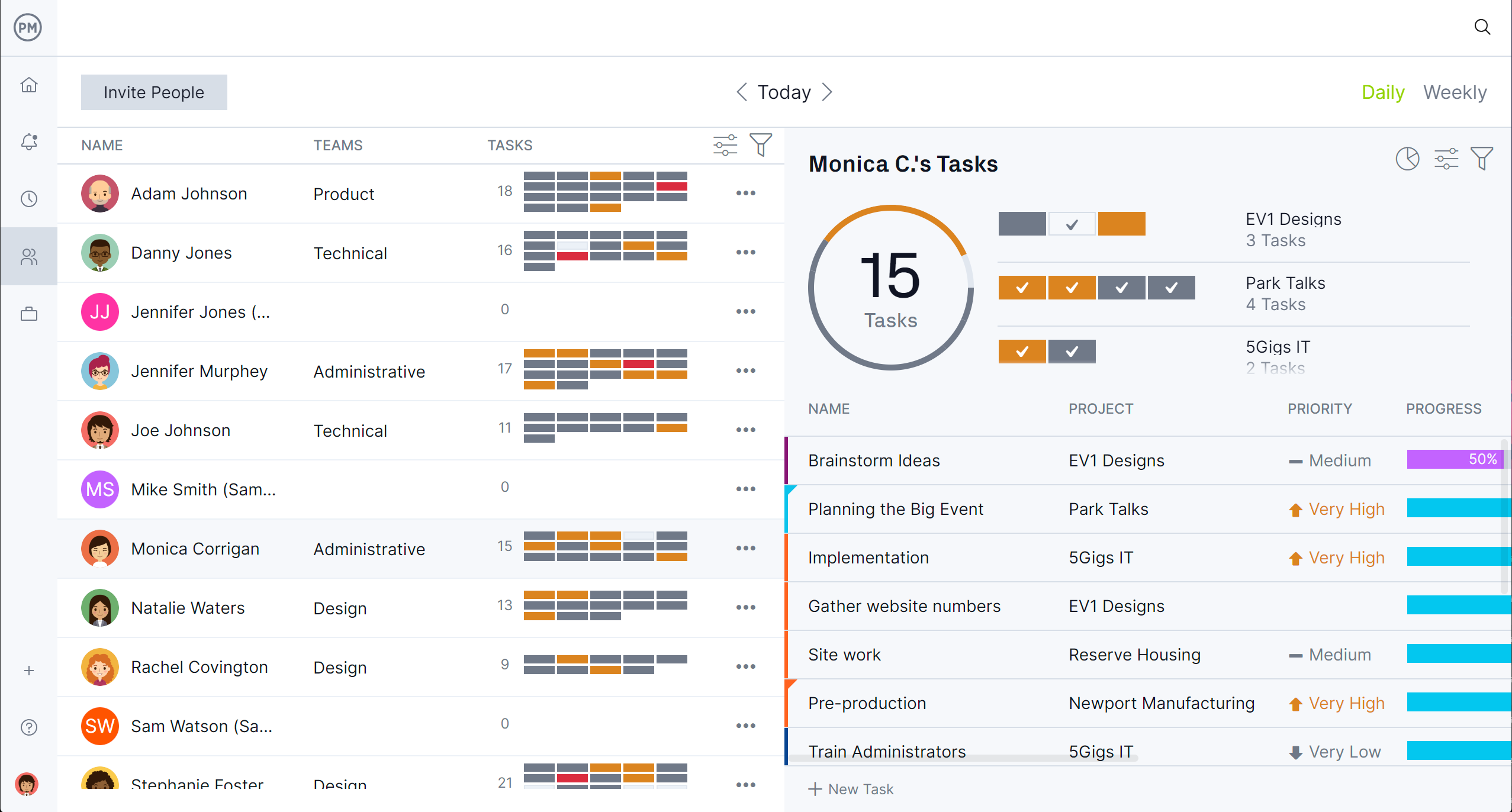When a project or product manager is in the planning stage, they’re scheduling tasks to meet a schedule and not exceed the budget. But if the customer needs aren’t met with the deliverables being created, the project is a failure. Equally or more important than meeting deadlines and avoiding cost overruns is acceptance criteria.
Why are acceptance criteria important? We’ll explain by defining the term and detailing what should be included to help the development team produce successful deliverables. Then we’ll explain when this process occurs, who defines it and more.
What Are Acceptance Criteria?
Acceptance criteria in project management are the specific conditions, requirements or standards that a deliverable must meet before it is accepted by stakeholders, clients or end users. These criteria define what is considered a successful completion of a project, task, or product feature.
For acceptance criteria to be useful it must follow certain characteristics. For example, it should be unambiguous, avoiding vague language to avoid misinterpretation. The criteria should also be measurable and testable, meaning that pass and fail conditions are defined and can be verified. Naturally, the deliverables must contribute to overall project objectives and align with business goals. Finally, they should be realistic and achievable given the resources and constraints of the project.
Once criteria acceptance is set, the project must be managed in a way that deliverables meet those standards. The best way to do this is by employing project management software. However, not all project management tools are alike. ProjectManager is award-winning project and portfolio management software with multiple project views to manage, execute and track deliverables in real time.
Product managers can fulfill the product owner’s needs by scheduling tasks, resources and costs on robust Gantt charts. But they do more than that. Our Gantt charts link all four types of task dependencies to avoid delays and cost overruns, filter for the critical path to identify essential tasks and set a baseline to track planned effort against actual effort in real time. Those plans are then shared across the software allowing teams to manage their backlog and do sprint planning on kanban boards or task lists, which product owners can stay updated on the calendar view. Get started with ProjectManager today for free.


What Should Be Included in Acceptance Criteria for Project Deliverables?
Acceptance criteria define the specific conditions a project deliverable must meet to be considered complete and accepted by stakeholders. Clear, well-defined criteria help ensure quality, align expectations and provide a basis for testing and validation. Below are the key components that should be included.
- Deliverable Description: Provides a clear definition of the deliverable, including its purpose, scope and expected outcome to ensure it meets stakeholder expectations and business requirements.
- Functional Requirements: Specifies the core functions, features and capabilities the deliverable must include to meet user and business needs.
- Non-Functional Requirements: Covers additional attributes such as security, usability, scalability and reliability that impact performance but aren’t directly related to functionality.
- Performance Requirements: Defines how well the deliverable should operate, including speed, capacity, load handling and response times to ensure optimal efficiency.
- Quality Requirements: Establishes standards for accuracy, consistency and reliability to maintain high-quality output and user satisfaction.
- Compliance and Regulatory Requirements: Outlines industry-specific regulations, legal obligations and company policies that the deliverable must adhere to, ensuring legal and operational compliance.
- Constraints and Limitations: Identifies any restrictions such as budget, time, technology or resource constraints that could impact the deliverable’s development and implementation.
- Success Criteria and Testability: Defines measurable success indicators and outlines how the deliverable will be tested to confirm it meets acceptance criteria.
- Review and Approval Process: Specifies the steps for internal and external review, stakeholder validation and formal approval before final acceptance and project closure.
When Should Acceptance Criteria Be Defined?
Acceptance criteria should be defined during the project planning phase before development or execution begins. Establishing clear criteria early ensures that all stakeholders share a common understanding of what constitutes a successful deliverable. It also helps prevent misunderstandings, scope creep and costly revisions later in the project lifecycle.
During requirement gathering and refinement, acceptance criteria should be developed alongside functional and non-functional requirements. In agile methodology, they are typically written as part of user stories in collaboration with product owners, developers and quality assurance (QA) teams. This approach ensures that criteria are realistic, testable and aligned with business objectives.
Acceptance criteria should be finalized before work begins on any deliverable to serve as a clear benchmark for success. However, they may be refined throughout the project based on feedback, evolving business needs or regulatory changes. Ensuring criteria are well-documented and agreed upon before execution helps streamline validation, testing and final approval.
Who Defines the Acceptance Criteria for Project Deliverables?
Project stakeholders, including clients, product owners and business analysts typically define acceptance criteria. They ensure the deliverables align with business goals, regulatory requirements and stakeholder expectations. Stakeholders provide input on what success looks like and specify essential features, functionality and quality standards.
The project team, including developers, designers and quality assurance specialists, collaborates with stakeholders to refine the acceptance criteria. They ensure the criteria are realistic, measurable and testable within the given project constraints. Agile development teams often define acceptance criteria as part of user stories, ensuring clarity before development begins.
In many cases, project managers facilitate the definition process, ensuring all parties agree on the acceptance criteria before execution. They help document and validate acceptance criteria, making sure they serve as a clear guideline for deliverable evaluation. Final approval typically involves key stakeholders who ultimately accept or reject the deliverable based on these predefined standards.
How to Write Acceptance Criteria
Writing clear and well-defined acceptance criteria is essential to ensuring that project deliverables meet stakeholder expectations and quality standards. The process involves identifying key stakeholders, gathering requirements, defining testing methods and ensuring traceability. Below are the key steps to follow.
1. Identify Key Project Stakeholders
Start by determining who is responsible for defining and approving the acceptance criteria. This includes clients, product owners, end users and project team members. Engaging the right stakeholders ensures that the acceptance criteria reflect real business needs and expectations.
2. Gather Requirements for Project Deliverables
Work closely with stakeholders to define the functional and non-functional requirements of the deliverables. This step involves documenting what the deliverable must accomplish, any constraints and specific success conditions that need to be met.
3. Establish Acceptance Testing Methods and KPIs
Define how the deliverable will be tested and measured against the acceptance criteria. Establish key performance indicators (KPIs) to assess functionality, performance and quality. Testing methods may include user acceptance testing (UAT), automated testing or performance evaluations.
4. Create a Requirements Traceability Matrix (RTM)
A requirements traceability matrix (RTM) helps track acceptance criteria from definition to validation. It ensures that all project requirements are linked to their corresponding tests and deliverables, helping teams verify that each requirement is met before approval.
Benefits of a Well-Defined Acceptance Criteria
Well-defined acceptance criteria ensure clarity and alignment among all project stakeholders by setting clear expectations for deliverables. They help prevent misunderstandings between teams, clients and end users by providing a shared definition of success. This clarity reduces the risk of scope creep and ensures that development efforts stay focused on meeting specific business needs.
Having detailed acceptance criteria improves quality and testing efficiency by providing measurable and testable conditions for evaluating deliverables. Quality assurance teams and developers can use these criteria to validate functionality, performance and compliance before submission. This structured approach minimizes defects, reduces rework and ensures the final product meets expected standards.
Acceptance criteria also streamline the approval and acceptance process, making it easier for stakeholders to verify whether a deliverable meets requirements. With predefined success criteria, project teams can quickly address gaps or revisions before the final handover. This results in smoother project execution, faster decision-making and greater stakeholder satisfaction.
Acceptance Criteria Examples
Acceptance criteria vary across industries and project types, but they always serve the same purpose—defining the conditions a deliverable must meet to be considered complete. Below are two examples of acceptance criteria: one for a manufacturing project and another for a user story in software development.
Manufacturing Project Acceptance Criteria
For a manufacturing project, acceptance criteria ensure that the final product meets quality, safety and performance standards. That process can look like the following.
- The product must be manufactured using ISO 9001-compliant materials and processes
- Each unit must pass a quality inspection, ensuring no defects greater than 0.5mm in variance
- The final product must withstand temperatures of up to 200°C without deformation
- Packaging must meet industry-standard safety guidelines to prevent damage during transportation
User Story Acceptance Criteria
In software development, acceptance criteria define the expected behavior of a feature within a user story.
User Story: “As a user, I want to reset my password so I can regain access to my account if I forget it.”
- A “Forgot Password” link must be displayed on the login page.
- The system must allow users to enter their registered email to receive a reset link.
- The reset link must expire after 24 hours for security reasons.
- The new password must meet minimum security requirements (e.g., at least eight characters, including one number and one special character).
- Users should receive a confirmation email after successfully resetting their password.
How ProjectManager Helps Manage Projects and Meet Acceptance Criteria for Deliverables
Having acceptance criteria is one of the many things project managers do to set their projects up for success. As we noted, it’s as vital to delivering projects as planning, budgeting, resource management, monitoring and controlling. But it is also only a small part of that big list of needs a project demands to reach a successful conclusion.
That’s why project management software is so important. It has the features project managers and their teams need to meet acceptance criteria and more. ProjectManager has multiple project views that allow everyone to have the right tools for the right job, but that’s only the beginning of the benefits of our software.
Robust Resource Management and Cost Tracking Features
Resource planning starts on the Gantt chart, where human and nonhuman resources are scheduled. Then, when onboarding the team, project managers can set their availability, including PTO, vacation, global holidays and skill sets, which helps assign the right task to the right person. The color-coded workload chart shows resource allocation over a project or multiple projects. This makes it easy to see who is overallocated or underutilized and then balance the team’s workload to keep them working at capacity. There’s even a team page for a summary of the team’s daily or weekly activities, which can be filtered by priority, progress and more.
Real-Time Project Management Dashboards
Monitoring progress and performance allows project managers to catch issues that can impact the acceptance criteria and resolve them. For a high-level overview, toggle to the real-time project or portfolio dashboards to view one or multiple projects. Easy-to-read graphs and charts show cost, time, workload and more. For more details, visit our customizable reports, which can be generated with a keystroke. There are reports on project or portfolio status, variance, timesheets, workload and more. Each can be filtered to focus on key data points or provide a summary of progress to share with stakeholders. Even our secure timesheets help. They streamline the payroll process but also track labor costs to help keep to the budget.


Related Content
Those who enjoyed learning about acceptance criteria in project management, know that our site is full of such informational content. We publish multiple blogs a week, eBooks, video tutorials, free templates and more. Below is a sample of some recently published related pieces.
ProjectManager is online project and portfolio management software that connects teams whether they’re in the office or out in the field. They can share files, comment at the task level and stay updated with email and in-app notifications. Join teams at Avis, Nestle and Siemens who use our software to deliver successful projects. Get started with ProjectManager today for free.






